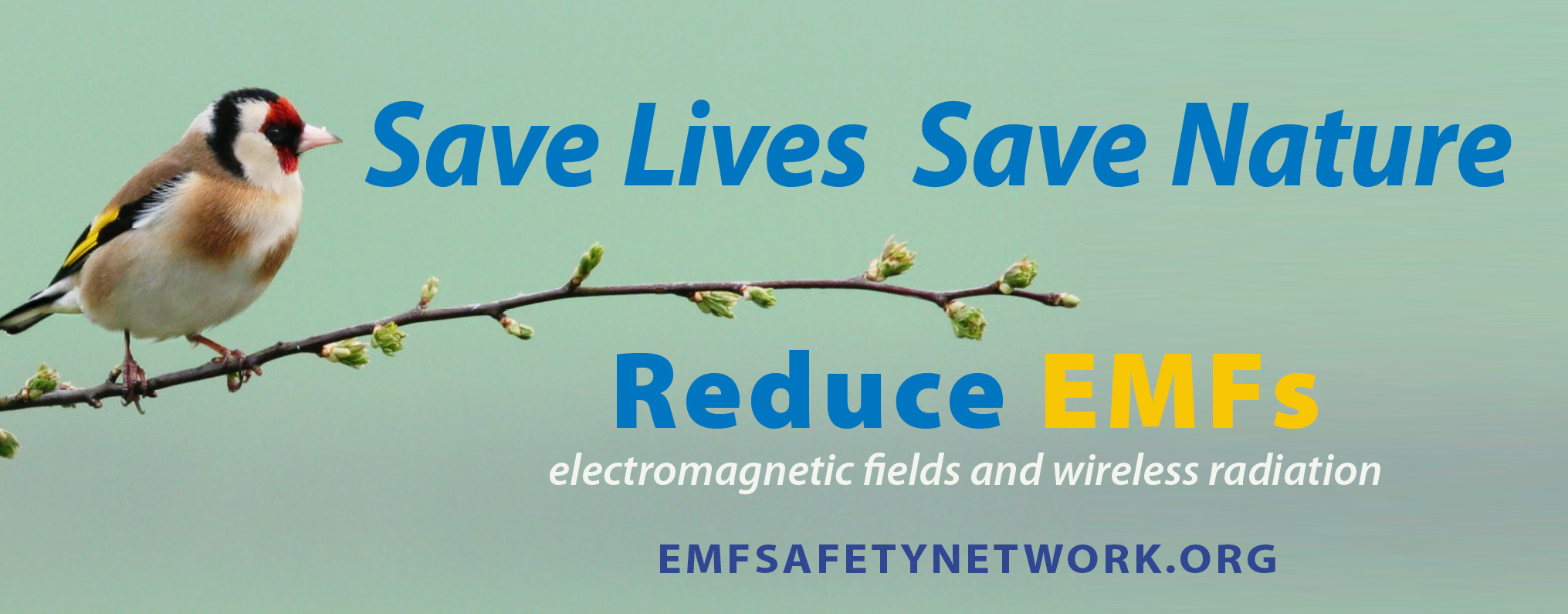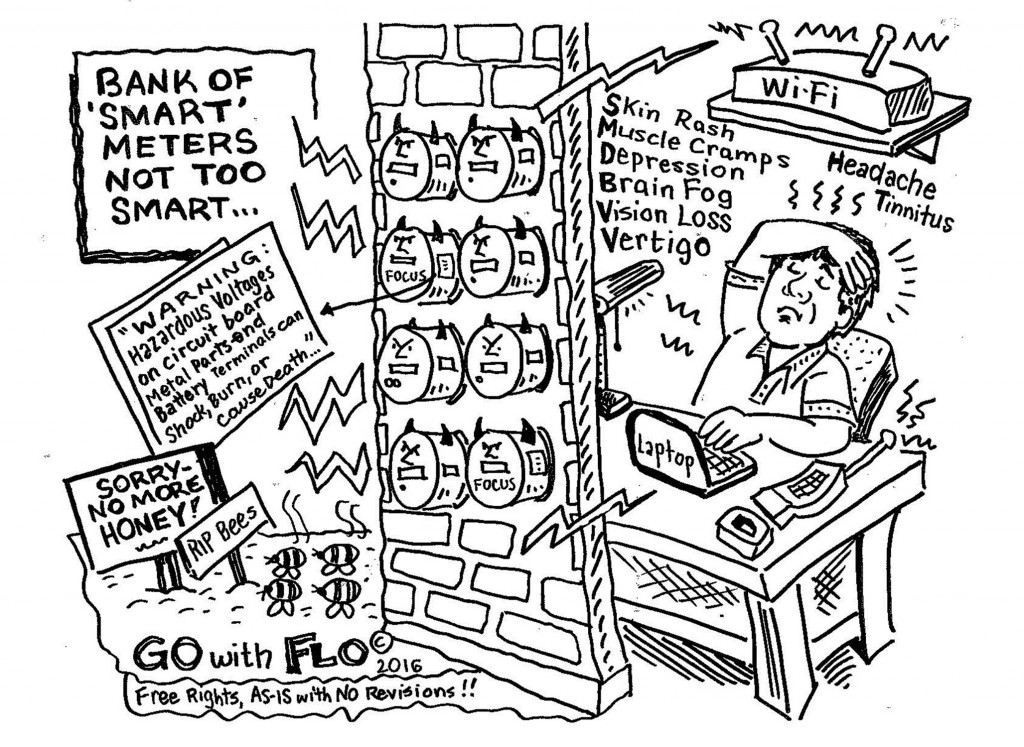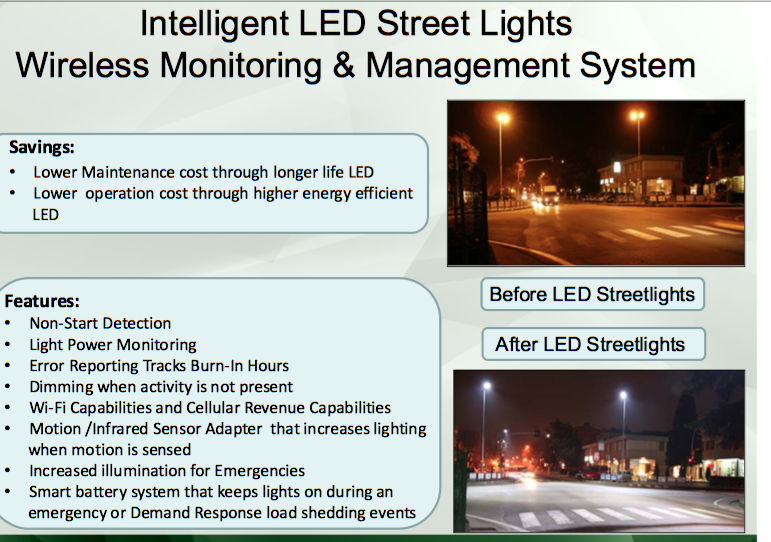Category: Public Health
A tribute to activists: Smart Meters Suck
The perils of LED streetlights

There is a major push all over the country to install LED streetlights based on assumptions of saving energy and money. In places where the LEDs have been installed there are so many complaints. On February 16 Sebastopol will consider whether or not to allow PG&E to install the LED streetlights. PG&E owns the streetlights and requires cities to opt-in to the changeout.
PG&E is currently installing LED streetlights in Santa Rosa, and we took a team to investigate, measure and photograph there. What we found is, unlike the warm yellow streetlights, the LED’s are very white, with cold blue tones, and painfully bright.
Mary Carvalho who lives in Santa Rosa writes, “Has anyone noticed lately that the night sky is lit up like a full moon every night?”
Paul Marantz, a lighting designer said about the yellow streetlights, “there was a warmth about them that’s missing from the new lights. And because of the way the LEDs are designed, it’s a much more directed light, with more glare.”
When the environment is saturated with blue rich light it causes melatonin reduction which can affect sleep. Harvard Medical School reported blue light has a dark side. “Light at night is bad for your health, and exposure to blue light emitted by electronics and energy-efficient lightbulbs may be especially so.”

Bob Parks, executive director of the International Dark-Sky Association states, “Now, people can certainly close their blinds and block-out that rich blue-white light. The problem is that every other species on the planet can’t do that, so you have an impact on everything else. And not just animals — we are talking plants, trees, right down to one-cell organisms.”- Earth Island Journal
The Department of Energy (DOE) and IEEE reported there are serious health risks from LEDs if inexpensive drivers are used. DOE writes, “Why is flicker bad? For one thing, in addition to being annoying and distracting, it can cause eyestrain, blurred vision, and impairment of performance on sight-related tasks. And in those who are flicker-sensitive, it can cause debilitating headaches and migraines — 10% of the population is estimated to suffer from migraines, and that’s only one of the groups prone to flicker sensitivity. According to the IEEE recommended practice, flicker has been reported to contribute to autistic behaviors, and can be a trigger for epileptic seizures.… Some of these problems might occur even when the flicker isn’t detectable by the eye.”
The EMF Safety Network sent a list of questions to PG&E about their LED streetlights. We await their answers. We can trust PG&E will cut costs and we can’t be certain they will tell the public the truth. We don’t know whether or not PG&E will be using the streetlights for wireless transmissions, as has been done in Los Angeles and Florida. The California Public Utilities Commission (CPUC) had a presentation on their website that touted the benefits of “intelligent” wireless streetlights.
We don’t know if PG&E is installing these, but we do know the rapid increase of microwave technologies deployed on our homes and in our neighborhoods, largely without informed consent, threatens privacy, public health, children, wildlife and nature.
The other risk is whether or not the LED streetlights add unintentional radiation to the power lines, creating “dirty electricity” like PG&E smart meters do. Samuel Milham, MD and David Stetzer, Electrical Engineer wrote a peer reviewed published paper in 2013. They wrote, “Dirty electricity, also called electrical pollution, is high-frequency voltage transients riding along the 50 or 60 Hz electricity provided by the electric utilities… has been associated with cancer, diabetes and attention deficit hyperactivity disorder in humans.
Some people claim brighter streetlights will help reduce crime. However, Earth Island Journal reported “Public safety was a big motivator behind the Oakland conversion project, and it may seem intuitive that brighter lights improve safety. However, some studies suggest that though brighter streets make people feel safer, they have no impact on actual crime levels.”
In 2015, PG&E’s claims of LED cost and energy savings were merely assumptions. In the CPUC 2015 Uncertain List they stated, “market move to LED technology requires verification.” As yet PG&E has offered no proof. In addition the city claimed the streetlight conversion would be free, however PG&E intends to recover streetlight costs through customers rate increases. So we all pay for the LED streetlights.
Why should perfectly good streetlights be scrapped for a risky technology whose benefits are questionable? A study published in late 2010 in the journal Environmental Science and Technology found that LEDs contain lead, arsenic and a dozen other potentially dangerous substances. While it is possible that the LED’s save energy, it’s not worth the cost to public and environmental health.
In September 2015, the Sebastopol city council had the PG&E streetlight conversion on their consent calendar. Due to complaints, they took the issue off consent and put it on the regular agenda. At that meeting, Rich Emig, Public Works superintendent, gave a report acknowledging the LED health risks. Public comments included one woman who said when she was a child she had seizures from light flicker. See the Sebastopol City Council’s video which starts at 1:40:00
Considering the city acknowledged the serious pubic health risks, why are they bringing it back to the council, and why have they not notified the public of this issue that will affect each and everyone of us?
More information:
What LED light pollution looks like from space
http://www.techinsider.io/astonauts-photos-from-space-leds-light-pollution-2016-1
Ecological Light Pollution http://www.urbanwildlands.org/Resources/LongcoreRich2004.pdf
A Silent Cry for Dark Skies http://astrosociety.org/edu/publications/tnl/74/74.html#3
Residents sue Monterrey over new LED streetlights (2012)
http://www.montereyherald.com/article/ZZ/20120717/news/120718012
Ann Arbor Michigan has been a leader in converting city streetlights to energy-efficient LEDs, but despite a large reduction in energy usage, DTE Energy is proposing rate increases for LED lights, while decreasing rates for conventional high-pressure sodium lights. http://www.mlive.com/news/ann-arbor/index.ssf/2015/02/ann_arbor_responds_to_streetli.html
Darkness is a requisite part of life.
“Half of your life, half of the lives of all nature, half of all human history has occurred between sunset and sunrise. We and all of the natural kingdom have evolved in a landscape that segues from a bright blessed day to a dark sacred night. A dark night is really that–sacred. Every cell in the human body has time-related functions, part of the bigger circadian system. I’m referring to science, not some woo-woo feel-good incense-laden chanting mysticism. Healthy life depends on critical functions for which the absence of light is essential.”
1. All outdoor lighting shall be full cutoff, or fully shielded.
2. If LED lights are used, they shall have a correlated color temperature (CCT) less than 3000K.
3. All lights shall minimize glare, sky glow, and light trespass. —–Excerpt and recommendations from www.Nightwise.org
Video of New York news story on LED street lighting and resident reaction. http://pix11.com/2015/04/27/new-bright-leds-that-replaced-street-lamps-angering-local-residents/
The city of Davis received so many complaints about the LED lights they put the project on hold for a year, then spent $350,000 more money on the project. http://sacramento.cbslocal.com/2014/10/21/davis-will-spend-350000-to-replace-led-lights-after-neighbor-complaints/
Berkeley complaints: http://www.berkeleyside.com/2014/08/06/berkeley-residents-weigh-in-on-new-led-streetlights/
Houston, we’ve got a problem with LEDS. http://www.houstonpublicmedia.org/articles/news/2016/02/08/136878/city-waiting-for-more-information-on-alternative-led-street-lights-as-some-call-for-change/
Maine Supreme Court smart meter ruling ignores evidence of harm
This week the Maine Supreme Court upheld the finding of utility regulators regarding smart meter safety. The Court supported this difficult to follow position: “It is one thing to make a finding that evidence is credible regarding potential harm and quite another to find there is a legally credible threat of  harm—that a credible threat of harm is in fact credible: likely and probable to result in harm.”
harm—that a credible threat of harm is in fact credible: likely and probable to result in harm.”
The Court upheld this position, even though they knew there is evidence of risk. “The Commission acknowledged that there had been some evidence presented of potential future risk posed generally by RF exposure,…”
The key to the ruling is what the court calls, “balancing the potential for harm against the usefulness and pervasiveness of the technology at issue.”
This ruling culminates a four year legal battle in Maine over the health and safety effects of smart meters. Even though the legal burden was on the utility (CMP) to show smart meters were safe, the Court ignored this and placed the burden on the customer to pay to avoid the risk of pulsed radiation smart meters emit.
 Ed Friedman stated: “ The Court has miserably failed the people of Maine. They ignored independent testimony from international experts on the credible threat of harm RF exposures at smart meter levels pose, and instead chose to believe the “Marlboro Man” that smoking is good for us.”
Ed Friedman stated: “ The Court has miserably failed the people of Maine. They ignored independent testimony from international experts on the credible threat of harm RF exposures at smart meter levels pose, and instead chose to believe the “Marlboro Man” that smoking is good for us.”
Maine Supreme court ruling: http://www.mainecoalitiontostopsmartmeters.org/wp-content/uploads/2016/01/2016-ME-19-Friedman-Appeal-Decision-1-26-16.pdf
Would you stick your head in a microwave oven?
A math teacher from Ireland tells a story about going to a party where after dinner people are having coffee and tea. Several people have their cell phones on the table. The woman seated beside him places her phone close to his plate. In the video he says why he does not like cell phones, and what happens when he moves her phone away from himself. The table conversation turns ugly.
Katie Singer: Radiation Soup
Intro to EMF Safety Network
Scroll down this page to read about currents events!  EMF Safety Network’s mission is to educate and empower people by providing science and solutions to reduce EMFs to improve lives, achieve public policy change, and obtain environmental justice.
EMF Safety Network’s mission is to educate and empower people by providing science and solutions to reduce EMFs to improve lives, achieve public policy change, and obtain environmental justice.
Peer-reviewed published studies link electromagnetic fields (EMF’s) and wireless radiation (RF) to health problems including: fatigue, headaches, sleep problems, anxiety, ringing in the ears, heart problems, learning and memory disorders, increased cancer risk, and more. For a comprehensive review of the science go to https://bioinitiative.org and or read science abstracts here: shortcut-to-science. For personal accounts of harm see this EMF Health Effects 2019 Survey.
If you think you might be having health problems from EMF’s please see this excellent resource written by Dr. Scott Eberle. http://emfsafetynetwork.org/safety-precautions/ehs-doctor/
Studies show radiation harms nature and children are especially vulnerable. This handout includes links to science on RF effects on nature and this study recommends precaution for children.
Medical doctors advice precaution. In California and other states, prudent avoidance of EMFs is recommended public policy. Prudent avoidance means taking steps to reduce exposure. See California Department of Public Health cell phone advisory, New Hampshire 5G Final Report.
Steps you can take to reduce EMF’s include using: corded (wireless off) internet; corded phones; and analog utility meters (remove smart meters). And reduce cell phone use. Keep cell phones away from your body and away from children. Best to use cell phones for emergencies only. Set limits on computer and screen time, especially for children. Consider having your house tested for EMF’s. More ideas here: safety tips See also What are EMFs? brochure.
For an excellent intro and overview, including the science, watch the following video with Joel Moskowitz PhD “Health Effects of Cellphone & Cell Tower Radiation: Implications for 5G” held on Nov. 3, 2021. He speaks for about 45 minutes, followed by a Q and A.
Heres another excellent overview by Satya Giordano of EMFCenter.com
Read more intro, or scroll down to read our blog.
Reduce EMF’s in public transit says federal disability advisory group
The National Council on Disability Transportation Report addresses chemical and electrical sensitivities and recommends changes in policies and practices to improve access: http://www.ncd.gov/publications/2015/05042015/
This is news you can use! You can take this to bus, train and airplane companies and ask for accommodation.
“People disabled by environmental barriers experience debilitating reactions from very low-level exposures to chemicals or electromagnetic fields.” p. 207
(Department of Justice) “DOJ should develop standards and guidance on the access requirements for people with chemical and electrical sensitivities.” p. 351
“Transit agencies should eliminate environmental barriers to the greatest extent possible by using nontoxic, fragrance-free products and practices, and by avoiding all nonessential chemical and electromagnetic exposures to enhance access for people with chemical or electrical sensitivities.” p. 351
The National Council on Disability is a federal agency who advises the President, Congress and federal agencies regarding policies, programs, practices, and procedures that affect people with disabilities. This video explains more about their work.

